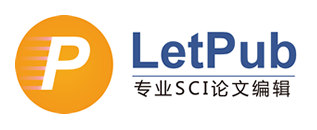State of arts on the bio-synthesis of noble metal nanoparticles and their biological application
Kok Bing Tan, Daohua Sun, Jiale Huang, Tareque Odoom-Wubah, Qingbiao Li
2021, 29(2):
272-290.
doi:10.1016/j.cjche.2020.11.010
 Abstract
(
)
Abstract
(
)
 PDF (9610KB)
(
)
References |
Related Articles |
Metrics
PDF (9610KB)
(
)
References |
Related Articles |
Metrics
Nanomaterials are materials in which at least one of the dimensions of the particles is 100 nm and below. There are many types of nanomaterials, but noble metal nanoparticles are of interest due to their uniquely large surface-to-volume ratio, high surface area, optical and electronic properties, high stability, easy synthesis, and tunable surface functionalization. More importantly, noble metal nanoparticles are known to have excellent compatibility with bio-materials, which is why they are widely used in biological applications. The synthesis method of noble metal nanoparticles conventionally involves the reduction of the noble metal salt precursor by toxic reaction agents such as NaBH4, hydrazine, and formaldehyde. This is a major drawback for researchers involved in biological application researches. Hence, the bio-synthesis of noble metal nanoparticles (NPs) by bio-materials via bio-reduction provides an alternative method to synthesize noble metal nanoparticles which are potentially non-toxic and safer for biological application. In this review, the bio-synthesis of noble metal nanoparticle including gold nanoparticle (AuNPs), silver nanoparticle (AgNPs), platinum nanoparticle (PtNPs), and palladium nanoparticle (PdNPs) are first discussed. This is followed by a discussion of these biosynthesized noble metal in biological applications including antimicrobial, wound healing, anticancer drug, and bioimaging. Based on these, it can be concluded that the study on bio-synthesized noble metal nanoparticles will expand further involving bio-reduction by unexplored bio-materials. However, many questions remain on the feasibility of bio-synthesized noble metal nanoparticles to replace existing methods on various biological applications. Nevertheless, the current development of the biological application by bio-synthesized noble metal NPs is still intensively ongoing, and will eventually reach the goal of full commercialization.








 Submit a Manuscript
Submit a Manuscript
 View All Issues
View All Issues
 Get Content Alert
Get Content Alert



 京公网安备 11010102001993号
京公网安备 11010102001993号